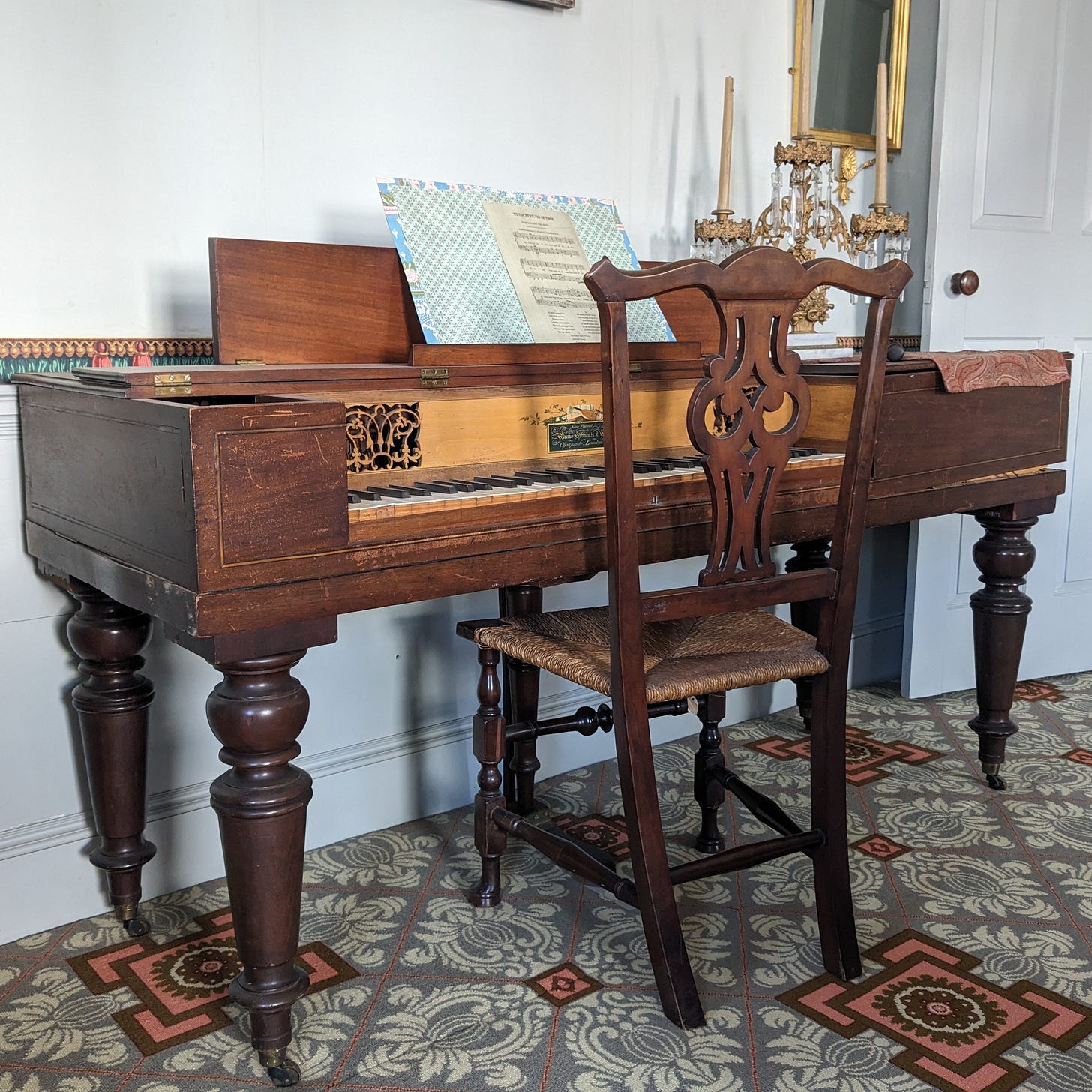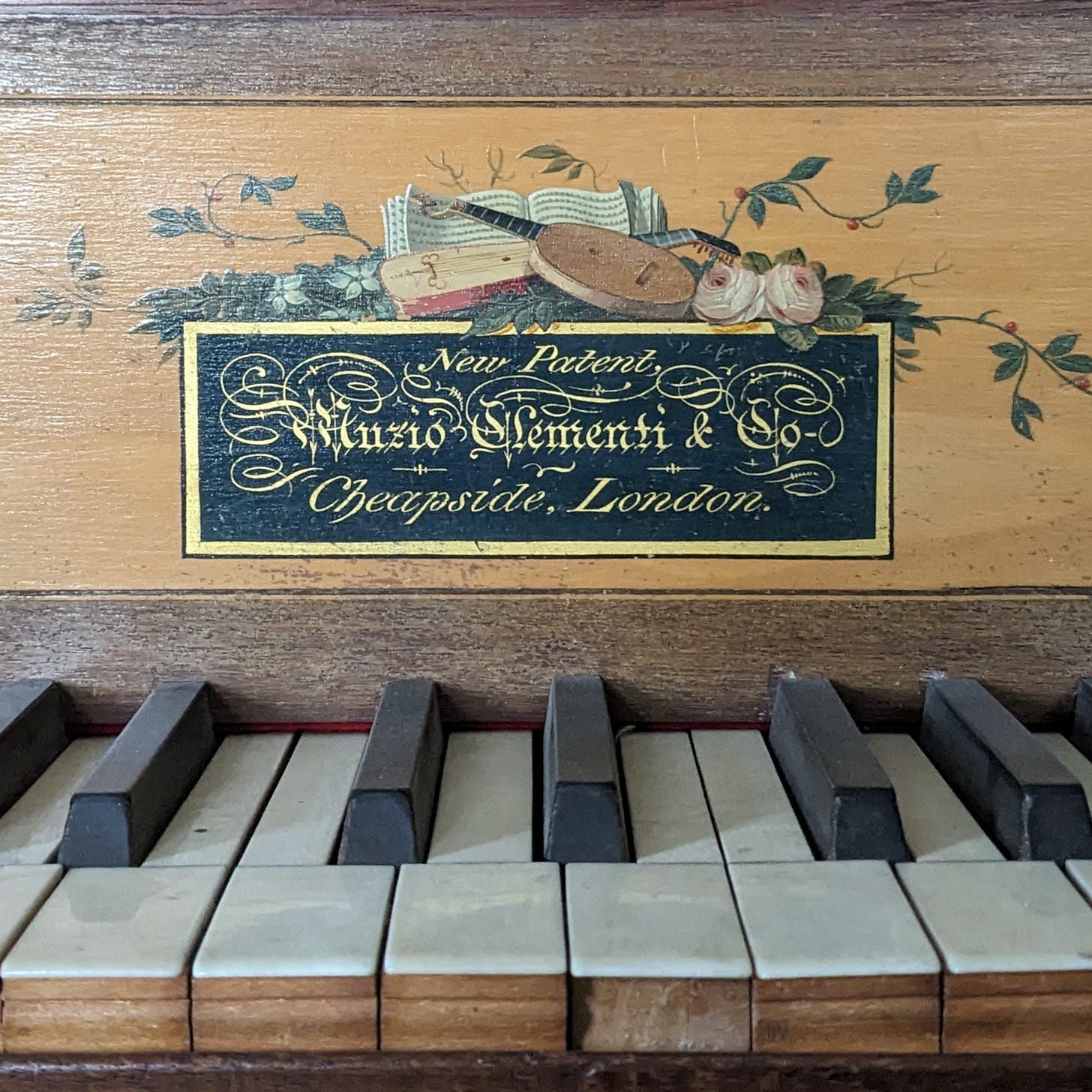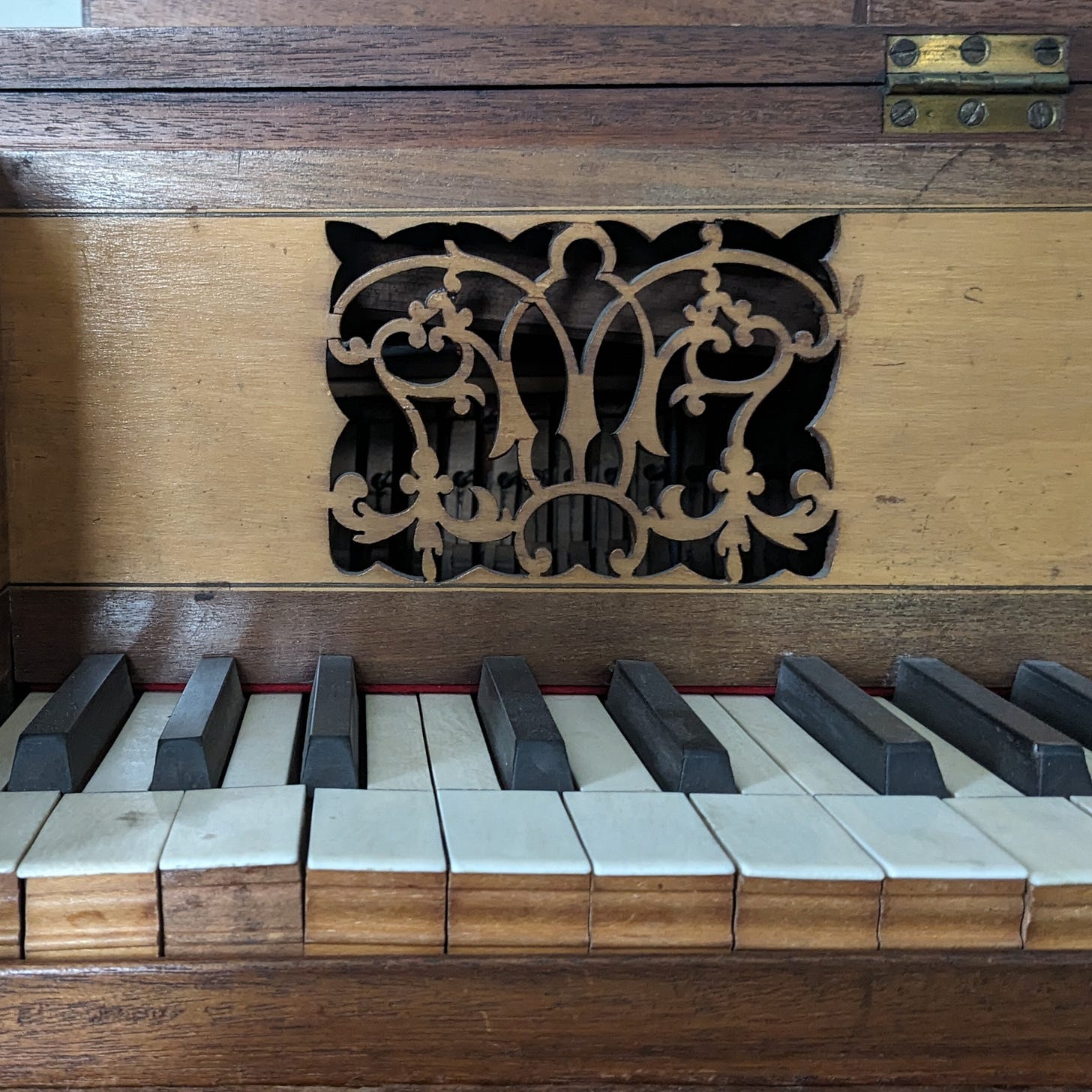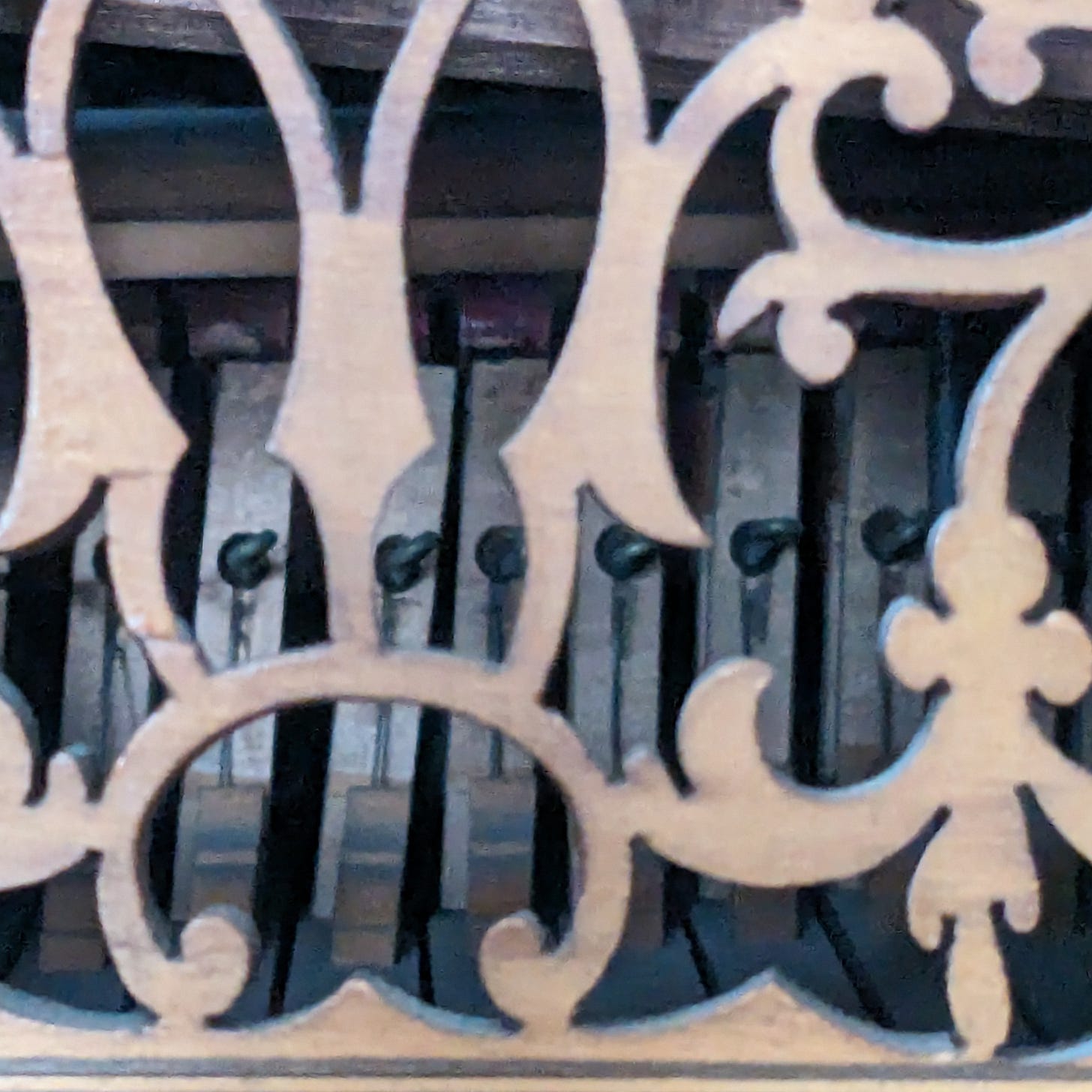It's deep winter in New England . . . time for a little music, perhaps
A look at the History Center's 1820s pianoforte
If you’re a subscriber to the Buzz, thank you! If you’re new here, or you haven’t become a subscriber yet, hit that subscribe button to have History Buzz delivered directly to your inbox. If you can, please consider a paid subscription to support the research and writing that make History Buzz possible.
It’s February here in New England. Even though the days are getting longer, sunset is still around 5:00pm.
What to do on a cold, dark February Saturday night? How about a little at-home music concert?
Throughout the nineteenth century, Americans took great delight in making music together by performing in instrumental and vocal ensembles, and by attending musical soirees, sing-alongs, and other interactive musical events.1
This pianoforte is in the Best Parlor of the historic house museum. It dates from the 1820s, shortly after the Blanchard House was built (1819).
The History Center’s pianoforte is a typical design for a pianoforte of the era. It has a mahogany base, band inlay, 68 keys, single pedal, four turned legs supporting a traditional rectangular pianoforte case, enclosing sounding-board, wires, and key-board.
From SquarePianos.com (link):2
Fortepiano and Pianoforte were interchangeable terms until recent times.
Today the word fortepiano is generally reserved for instruments made before 1830, or copies of them. Such instruments differ from the modern piano in their appearance, in their touch and in the resulting tone. The distinctive timbres of the 'fortepiano' arise from the following factors:
low string tensions (less than a quarter of the strain on modern pianos),
the absence of iron framing,
the use of soft leather covering to the hammers — not compressed felt as used in modern times. (Some eighteenth-century instruments had other covering materials, for example cork, or had plain wooden hammers — a notable feature of some early German instruments).
You can listen to a Clementi grand piano on the Duke University Musical Instrument Collections website, https://sites.duke.edu/dumic/instruments/keyboards/west-europe/clementi-grand-piano/ (link).
How are about you? Do you play an instrument, or create music at home in other ways? Or do you, like me, go out to hear live music? Leave us a comment! We love to hear from you.
I hope you can enjoy some music - at home or away - during these long months of winter.
~Elaine









An elegant cultural artifact in the Center's collection. Are there any other musical instruments archived?
Nice article.
I have a piano, a guitar, and a hand harmonica, but I don't play any of them.
Only my voice, songs, melodies, whistles, etc. enough to drive my wife batty.
Cord